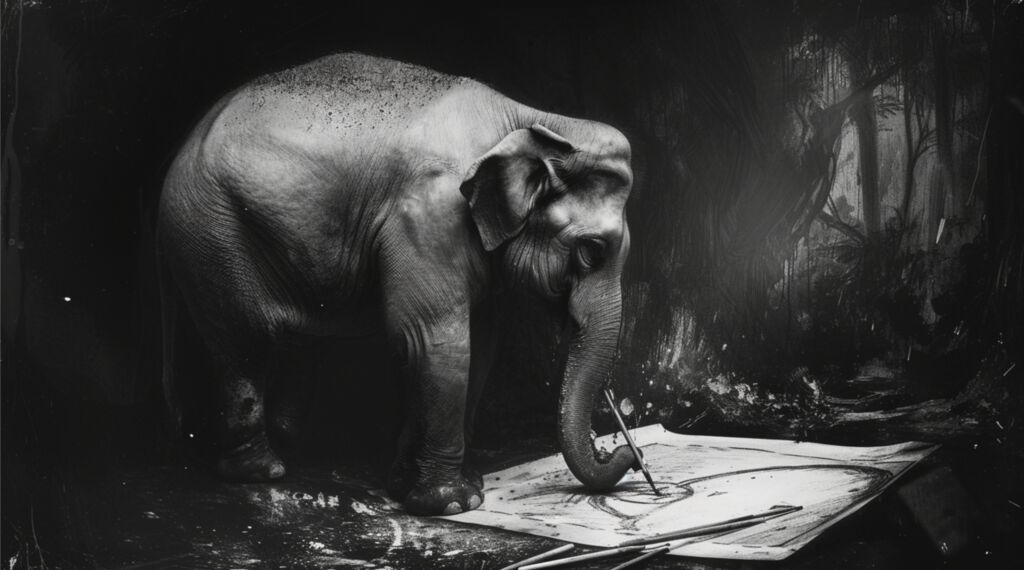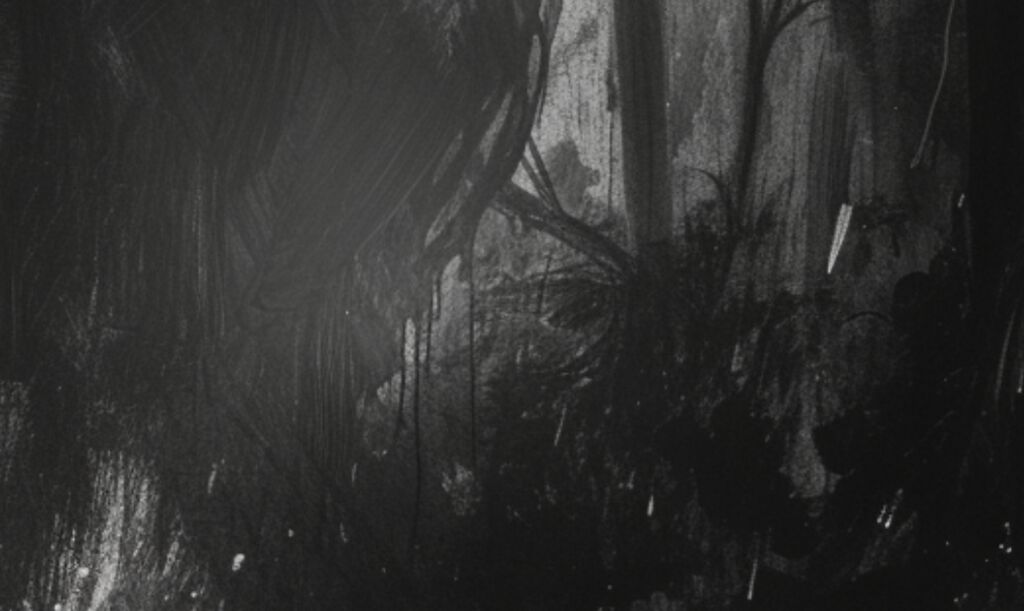Generative AI is highlighting one important aspect of art that is very much blurred by the simplicity to reproduce and copy art in our modern age. Art, at its core, is a form of communication – a medium through which artists express their intricate ideas, emotions, and experiences. It allows for the articulation of complexities that are beyond direct expression. Good art resonates deeply, connecting the artist and audience through shared human experiences. Art is able to express the inexpressible.

Blog
On AI Art
Generative AI and the Essence of True Art

"If you could say it in words, there would be no reason to paint."
Roland Barthes, in "The Death of the Author," argues that the audience's experience and interpretation are more important than the author's intent. In this context, the meaning of art is created by the audience's interpretation. Barthes believes that knowing the author and their intended message removes the mystery, the magic, and the enigma, therefore limiting art, reducing its impact. In the case of generative AI, with its enigmatic 'soul,' it remains an unsolved mystery, as we have no clear understanding of the exact decisions AI makes when it is creating.
AI and Human Creativity and Sincerity
Everyone who has tried creating art knows that it can sometimes feel like a therapy session. It feels at times like stripping naked in front of people, unintentionally and subconsciously opening up your deepest and most sacred feelings and traumas. From the topics you choose to the minute details in your work, it all reflects you, your unique path in life, your unique experiences and there is no way around it. Prior to the advent of Generative AI, art creation was a realm predominantly inhabited by humans, with notable exceptions in the animal kingdom. Elephants, apes, and dolphins have been observed engaging in artistic activities, as highlighted in the intriguing study, "My elephant could have painted that". These animals demonstrate a capacity for choice and creativity, using brushes and colours to craft patterns on canvas. Remarkably, elephants exhibit an abstract understanding, creating representations of their peers and various objects. What stands out in these examples is the spontaneous, uninstructed nature of their creativity.
These animals are immersing themselves in the act of manipulating and transforming materials, but once their artwork is complete, their interest seems to wane; the final product is abandoned, highlighting their focus on the process rather than the outcome. This behaviour mirrors a deeper, perhaps evolutionary trait in humans – the innate drive to manipulate our environment. We enjoy feeling of control. In this context, one wonders about the experience of AI in the act of creation. Will AI, ever 'enjoy' or 'struggle' with the creative process? Even if it becomes sentient one day, will it develop a need to create?
Prior to the advent of Generative AI, art creation was a realm predominantly inhabited by humans, with notable exceptions in the animal kingdom. Elephants, apes, and dolphins have been observed engaging in artistic activities, as highlighted in the intriguing study, "My elephant could have painted that". These animals demonstrate a capacity for choice and creativity, using brushes and colours to craft patterns on canvas. Remarkably, elephants exhibit an abstract understanding, creating representations of their peers and various objects. What stands out in these examples is the spontaneous, uninstructed nature of their creativity.
These animals are immersing themselves in the act of manipulating and transforming materials, but once their artwork is complete, their interest seems to wane; the final product is abandoned, highlighting their focus on the process rather than the outcome. This behaviour mirrors a deeper, perhaps evolutionary trait in humans – the innate drive to manipulate our environment. We enjoy feeling of control. In this context, one wonders about the experience of AI in the act of creation. Will AI, ever 'enjoy' or 'struggle' with the creative process? Even if it becomes sentient one day, will it develop a need to create?
The Gap
Our experience of the world aligns more closely with that of an elephant or a dolphin than with a hypothetical sentient AI. Generative AI, still a considerable distance from achieving sentience, is just a tool. Yet, its use in art creation already shifts the control from human hands to algorithmic 'decisions.' In the realm of traditional art, every choice and mistake is a reflection of the artist's psyche, their soul, their very essence.
Imagine, just for a moment, that AI reached a point where it became sentient and even developed an impulse to create art. Even then, its way of perceiving the world would be fundamentally different from ours. A 1GHz processor, the brain of the AI, processes a single operation in a mere nanosecond. In contrast, our human neurones are taking about 5 milliseconds to process and pass along information. This means that an AI system operates roughly 125,000 times faster than our human brains. How would it "see" the world?
AI could master the art of imitation, learning from our behaviours and possibly crafting art that touches human hearts. Hoverer, art born from AI would be like a perfectly written love letter by someone who has never felt love. It's this gap, this absence of genuine understanding of what it means to be human, that would leave the AI generated art lacking the essence we seek.
In light of Edward Hopper's quote that art exists to convey truths about our human condition which words cannot reach... While AI will one day fully replicate the mechanics of human artistic creation, and we will find enjoyment in its works, it is certain that its nature will not replace the human need for connection through art. The knowledge that the book you're engrossed in, filled with experiences that resonate deeply with you, was written by another human being, carries an impact that has a deeper meaning. It’s in these human connections the essence of true art resides. AI can replicate the form of art, but it cannot embody its true essence.
Imagine, just for a moment, that AI reached a point where it became sentient and even developed an impulse to create art. Even then, its way of perceiving the world would be fundamentally different from ours. A 1GHz processor, the brain of the AI, processes a single operation in a mere nanosecond. In contrast, our human neurones are taking about 5 milliseconds to process and pass along information. This means that an AI system operates roughly 125,000 times faster than our human brain. How would it "see" the world?
AI could master the art of imitation, learning from our behaviours and possibly crafting art that touches human hearts. Hoverer, art born from AI would be like a perfectly written love letter by someone who has never felt love. It's this gap, this absence of genuine understanding of what it means to be human, that would leave the AI generated art lacking the essence we seek.
In light of Edward Hopper's quote that art exists to convey truths about our human condition which words cannot reach... While AI will one day fully replicate the mechanics of human artistic creation, and we will find enjoyment in its works, it is certain that its nature will not replace the human need for connection through art. The knowledge that the book you're engrossed in, filled with experiences that resonate deeply with you, was written by another human being, carries an impact that has a deeper meaning. It’s in these human connections the essence of true art resides. AI can replicate the form of art, but it cannot embody its true essence.
Maksym Madonov is a designer at MetaDesign Berlin. You can contact him at maksym.madonov@metadesign.com.
Image created by Makysm Madonov via Midjourney